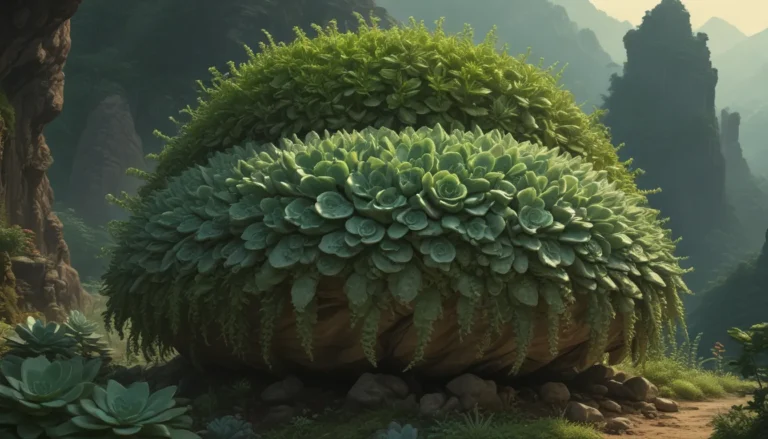How to Propagate Asters: A Comprehensive Guide to Growing Your Garden

Ah, asters – those lovely blue, pink, purple, and white blooms that grace our gardens as the growing season comes to a close. They breathe new life into the tired summer landscape, offering a hint of the fall spectacle that awaits.
If you’re a home gardener in USDA Hardiness Zones 4 to 8, you’re in luck. You can enjoy native species that reach towering heights of five feet, or opt for more compact hybrid varieties. But what if you want to grow more asters without breaking the bank? That’s where propagation comes in.
In this comprehensive guide, we’ll delve into the art of aster propagation, exploring various methods like seeds, soft stem cuttings, and divisions. So grab your gardening gloves and let’s get started!
What You’ll Learn
- Start with a Plant
- Seeds
- Soft Stem Cuttings
- Divisions
Propagation, simply put, is the process of creating new plants from existing ones. Whether you’re starting with seeds, rooting stem cuttings, or dividing existing plants, there’s a method that suits every gardener’s preference. Let’s dive into the details.
Start with a Plant
When it comes to propagating asters, it all begins with having a healthy plant to start with. Whether you’re dealing with a young seedling or a mature blooming beauty, the steps remain the same:
- Prepare the soil to a depth of 8 to 12 inches.
- Plant the aster at the same depth it was in the original container, ensuring ample room for root growth.
- Space plants accordingly to accommodate their mature dimensions.
- Fertilize with a slow-release granular product, making sure to keep it away from the stems and leaves.
- Water consistently, providing about an inch per week.
Once your aster is established, you can move on to propagation using seeds, stem cuttings, or divisions. Let’s unpack each method in detail.
Seeds
If you’re growing a native species, harvesting seeds can be an excellent way to replicate identical characteristics from the parent plant. However, if you’re dealing with a hybrid variety, it’s a different ball game.
How do you differentiate between a species and a hybrid? Look for botanical names – species have binomial names like Symphyotrichum novae-angliae, whereas hybrids have additional names denoting crossbreeding, like Symphyotrichum x amethystinum ‘Kylie.’
To start with seeds, you can choose between starting indoors or direct sowing outdoors:
- Start indoors: Begin four weeks before the last spring frost date.
- Direct sow outdoors: Wait until the danger of frost has passed.
Whichever method you choose, the key is to provide adequate moisture, sunlight, and fertilizer to help your seeds sprout and thrive.
Soft Stem Cuttings
Another method of propagation involves taking soft stem cuttings from established plants. This method is particularly useful if you want to avoid the variability of hybrid seeds.
Here’s how to take soft stem cuttings:
- Measure six inches down from the tip of a stem.
- Use clean, sharp pruners to make a clean cut above a leaf node.
- Remove the bottom four inches of leaves.
- Dip the cut end into rooting hormone powder.
- Plant the cutting in a biodegradable seed-starter pot filled with potting soil.
- Keep the soil moist and provide ample sunlight until new growth appears.
Stem cuttings offer a simple and effective way to propagate asters, ensuring that your new plants closely resemble the parent plant.
Divisions
For those with mature asters that are two to three years old, divisions can be a great way to create clones of the original plant. This method not only helps with propagation but also promotes better blooming and plant health.
To divide your asters:
- Wait until early spring when new shoots are visible.
- Gently dig and lift the clump of shoots.
- Slice through the clump to create multiple divisions.
- Plant each division in a sunny location, following the same care instructions as before.
In addition to propagation, dividing your asters every two to three years can help reduce overcrowding, improve airflow, and rejuvenate your plants for better blooming in the long run.
Green Thumb Savings
Propagating asters isn’t just a fun gardening activity – it’s also a great way to save money and expand your garden without the need to purchase new plants. Whether you choose to start from seeds, take soft stem cuttings, or make divisions, each method offers a unique way to multiply your favorite blooms.
So, put your green thumb to work and enjoy the satisfaction of growing your garden from scratch. Have you tried propagating asters before? Share your experiences in the comments below!
If you found this guide helpful, check out our other aster resources for more gardening inspiration:
- 11 Perennial Aster Species for Summer’s Last Hurrah
- 13 of the Best Companion Plants for Tall Late Season Asters
- 5 Tips for Growing Asters in Containers
Happy gardening!





